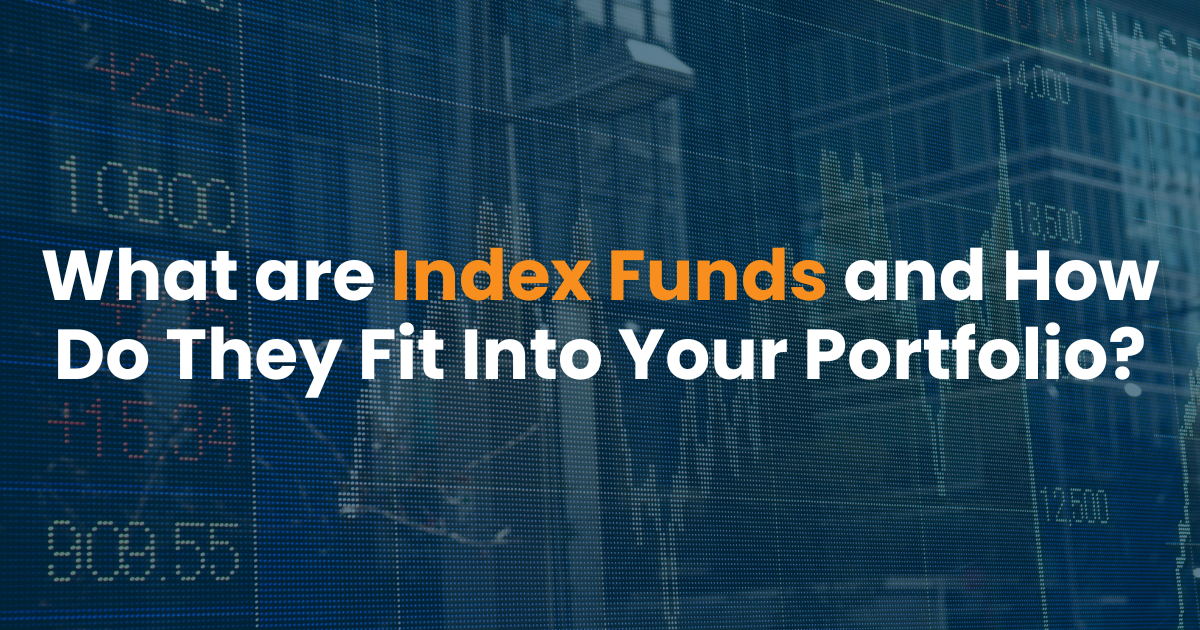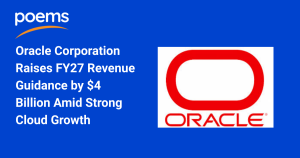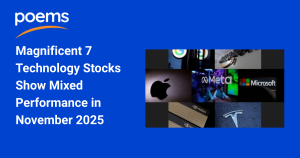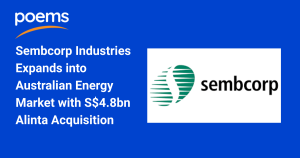What are Index Funds and How Do They Fit Into Your Portfolio? July 2, 2025

Index funds have been widely praised for their ability to generate steady returns with less risk and broader diversification than direct stock investments. When investors invest in individual company stocks, a single underperforming company can affect the return of their whole portfolio. In contrast, index funds mimic market indexes like the Dow Jones Industrial Average and S&P 500 index, and lessen the effect of any one company’s poor performance through diversification.
In addition, they also tend to charge lower fees than actively managed funds, contributing to their growing popularity. In fact, index funds now capture approximately 53% of the US market share.
What are Index Funds?
Index funds are a type of unit trust designed to replicate the performance of a specific market index. Like all unit trusts, they pool money from investors and invest in a diversified mix of stocks, bonds, and other securities.
What sets index funds apart is their passive investment strategy. They aim to mirror the composition and performance of an index by holding the same stocks in the same proportion. These funds may periodically rebalance to align with changes in the index’s composition
Passive Investing vs Active Investing
When it comes to investment strategies, two main approaches you’ll encounter are active investing and passive investing.
Passive investing, which involves tracking a market index, seeks to equal the market’s returns rather than outperform them. As there is little trading activity, this approach keeps costs low and removes the need for frequent decision making or timing the market.
Active investing, on the other hand, entails individual investors or professional fund managers actively choosing companies they believe will beat the market. While there’s potential for higher returns, this strategy also comes with larger expenses and risks and needs ongoing research and market timing.
| Parameter | Active Investing | Passive Investing |
| Investment Goal | Tries to outperform the market | Matches the market return | Strategy | Relies on the decisions by fund managers | Tracks a market index (S&P 500, Dow Jones) | Techniques | Picks stocks | Replicates the composition of an index | Returns | Generates potentially higher returns, but incurs higher losses | Generates market returns with lower volatility | Management | Requires research and expertise as you manage it actively | Requires less management | Expense ratio | Typically higher | Typically lower | Charges/Cost | Higher (0.5% – 2%) | Lower (0.02% – 0.2%) | Tax Efficiency | Less tax efficient | More tax efficient |
Pros and Cons of Index Funds
As with any other investment instrument, index funds have their risks and rewards. Here’s a balanced look at both:
Benefits of Index Funds
- Reduced Risk through Diversification: A single investment gives you exposure to hundreds of companies, spreading risk across sectors and industries
- Lower Costs: Even though a professional fund manager supervises an index fund, with no need for active management the expense ratios are lower
- Less Human Bias and Mistakes: Index funds follow predefined strategies and mirrors indices, this minimises the impact of emotional decision making or poor judgment
- Transparency: Since they mirror a market index, the holdings of an index fund are well-known and accessible on practically any investment platform
- Tax Benefits: Index funds tend not to sell frequently since they’re merely mirroring an index, and thus have lesser taxable events
- Historical performance: Over the long run, several index funds have outperformed their actively managed counterparts, particularly after accounting for fees and expenditures
Drawbacks of Index Funds
- Average Market Returns: Since they may include both high and low performers, returns reflect the market average not above it
- Costs to Manage the Index Fund: Although fees are lower, they are not zero. High-cost index funds can erode returns.
- Possible Tracking Errors: Occasionally, the fund isn’t in lockstep with its target index. This mismatch is termed tracking error. If the tracking error is minimal, the fund returns and the returns of the index being tracked (the benchmark) would be the same. The tracking error of a fund is usually stated in the factsheet
- No Downside Protection: In a market downturn, index fund continue holding all the stock in the index, even the underperformers
- No Control over Holdings: Investors have no say over the composition of the fund, which might include companies they would not otherwise choose.
ETF vs Index Fund
Index funds are offered as ETFs (Exchange-Traded Funds) or unit trusts. While ETFs provide lower costs and stock-like flexibility, unit trusts follow market indexes. Besides unit funds, you must also know the difference between ETF vs index funds to make the right investment decision:
| Parameter | Exchange Traded Fund (ETF) | Index-Tracking Unit Trust Fund |
| How It Works | Traded on SGX or other exchanges like a stock | Pooled investment bought directly from the fund house | Pricing | Real-time pricing throughout trading hours | Priced once a day at NAV (Net Asset Value) | Trading Flexibility | Buy/sell anytime during market hours | Buy/sell at end-of-day NAV | Minimum Investment | From 1 share | Can start from S$1 | Fees/Expense Ratio | Lower (typically 0.05% – 0.5%) | Higher (typically 0.5% – 1.5%) + potential sales charge | Liquidity | Higher – traded in real-time in the market | Lower – holdings are redeemed with the fund house | Dividends | Paid out or reinvested (depending on ETF) | Paid out or reinvested |
Index Funds Available on POEMS
| Minimum investment (differs for CPF fund source) | ||
| S$1 | S$1 | S$1 | S$1 | S$1 |
Conclusion
Building an investment portfolio on your own that yields successful returns can feel challenging. Looking for the right investment usually involves a lot of research into a company’s business model and financials. One way to bypass it all and make it more manageable is investing passively in index funds.
Some experts now believe that index funds can top 70% of total unit trust assets within this decade. Choose an index fund now and empower your investment goals.
FAQs about What are Index Funds
Why are index funds considered a low-cost investing option?
Index funds are managed passively, meaning they replicate the performance of a market index rather than striving to beat it. This decreases the need for active management, which cuts costs like management and operational expenditures.
What are low cost index funds?
Low-cost index funds are funds with reduced expense ratios, making them more affordable and accessible for investors. These funds keep expenses low by utilising a passive management method and concentrating on broad market indexes.
How do index funds differ from actively managed funds?
Index funds strive to match the performance of an index and are passively managed, whereas actively managed funds include fund managers choosing equities to try to beat the market.
What are the benefits of index funds investment?
Index funds offer diversity, low-cost ratios, and predictable long-term returns. They are suitable for investors wanting a hands-off, cost-effective strategy to generate wealth over time.
Disclaimer
These commentaries are intended for general circulation. It does not have regard to the specific investment objectives, financial situation and particular needs of any person who may receive this document. Accordingly, no warranty whatsoever is given and no liability whatsoever is accepted for any loss arising whether directly or indirectly as a result of any person acting based on this information. Opinions expressed in these commentaries are subject to change without notice. Investments are subject to investment risks including the possible loss of the principal amount invested. The value of the units and the income from them may fall as well as rise. Past performance figures as well as any projection or forecast used in these commentaries are not necessarily indicative of future or likely performance. Phillip Securities Pte Ltd (PSPL), its directors, connected persons or employees may from time to time have an interest in the financial instruments mentioned in these commentaries. Investors may wish to seek advice from a financial adviser before investing. In the event that investors choose not to seek advice from a financial adviser, they should consider whether the investment is suitable for them.
The information contained in these commentaries has been obtained from public sources which PSPL has no reason to believe are unreliable and any analysis, forecasts, projections, expectations and opinions (collectively the “Research”) contained in these commentaries are based on such information and are expressions of belief only. PSPL has not verified this information and no representation or warranty, express or implied, is made that such information or Research is accurate, complete or verified or should be relied upon as such. Any such information or Research contained in these commentaries are subject to change, and PSPL shall not have any responsibility to maintain the information or Research made available or to supply any corrections, updates or releases in connection therewith. In no event will PSPL be liable for any special, indirect, incidental or consequential damages which may be incurred from the use of the information or Research made available, even if it has been advised of the possibility of such damages. The companies and their employees mentioned in these commentaries cannot be held liable for any errors, inaccuracies and/or omissions howsoever caused. Any opinion or advice herein is made on a general basis and is subject to change without notice. The information provided in these commentaries may contain optimistic statements regarding future events or future financial performance of countries, markets or companies. You must make your own financial assessment of the relevance, accuracy and adequacy of the information provided in these commentaries.
Views and any strategies described in these commentaries may not be suitable for all investors. Opinions expressed herein may differ from the opinions expressed by other units of PSPL or its connected persons and associates. Any reference to or discussion of investment products or commodities in these commentaries is purely for illustrative purposes only and must not be construed as a recommendation, an offer or solicitation for the subscription, purchase or sale of the investment products or commodities mentioned.
About the author
Darius Lee
Darius Lee graduated from the National University of Singapore with a Bachelor’s of Engineering degree. Life took him on a different path and he ended up spending 8 years in the Wealth Management space. He is as obsessed with the technical aspects of investing as well as the psychology that drives investors. In his free time, he enjoys reading about topics from Economics to Science Fiction.

 Oracle Corporation Raises FY27 Revenue Guidance by $4 Billion Amid Strong Cloud Growth
Oracle Corporation Raises FY27 Revenue Guidance by $4 Billion Amid Strong Cloud Growth  Adobe Inc Delivers Solid FY25 Results as Semrush Acquisition Strengthens Marketing Portfolio
Adobe Inc Delivers Solid FY25 Results as Semrush Acquisition Strengthens Marketing Portfolio  Magnificent 7 Tech Stocks Post Mixed Performance in November 2025
Magnificent 7 Tech Stocks Post Mixed Performance in November 2025  Sembcorp Industries Enters Australian Energy Market via S$4.8bn Alinta Deal
Sembcorp Industries Enters Australian Energy Market via S$4.8bn Alinta Deal 




